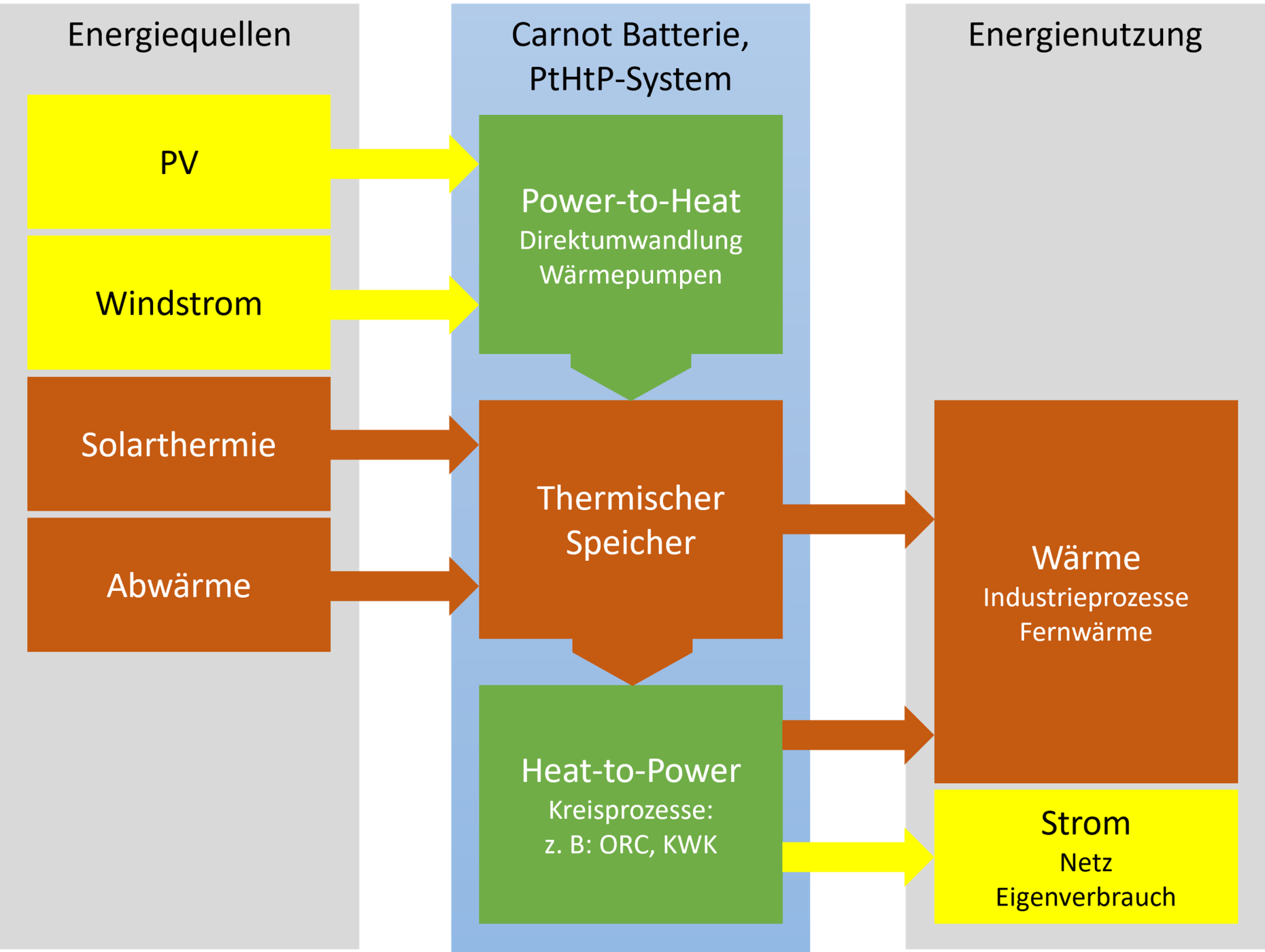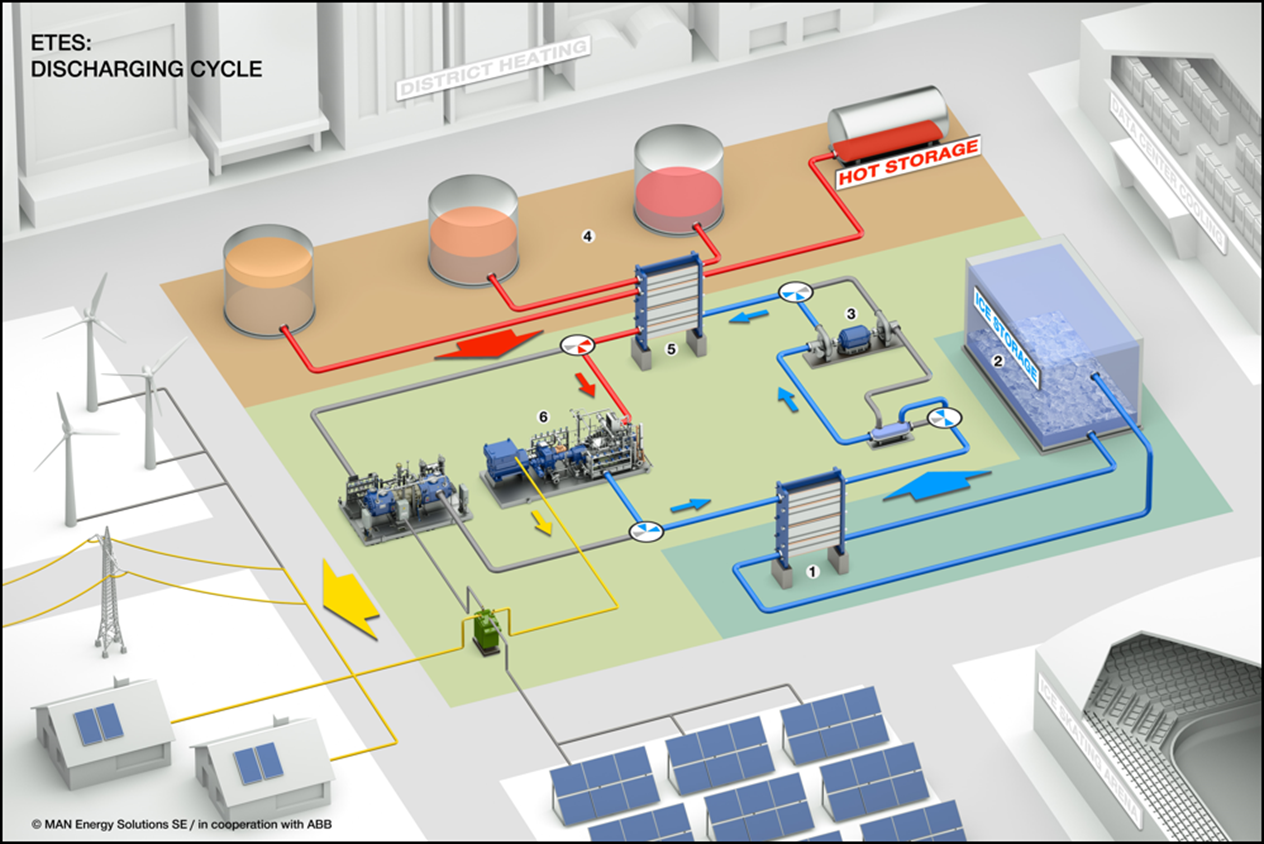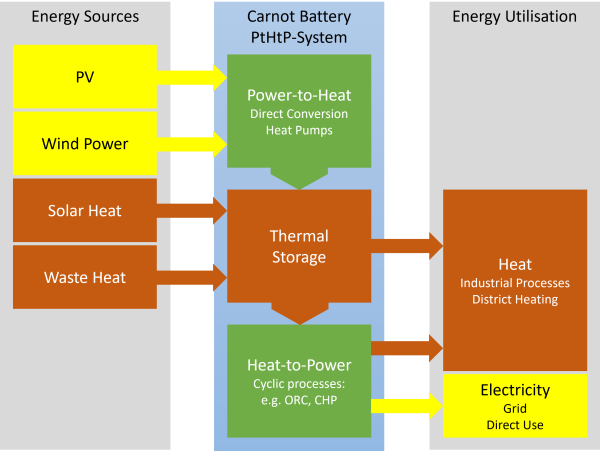IEA ES Task 44: Power-to-Heat and Heat integrated Carnot Batteries for Zero-Carbon (industrial) heat and Power supply
Short Description
The aim of the IEA ES Task 44 of the International Energy Agency is to examine the role of Power-to-Heat (PtH) applications and heat-integrated Carnot battery systems (PtHtP, see Figure 1) in the decarbonization of industrial processes and connected heat and power networks. For this purpose, suitable system concepts and use cases for different technology configurations are identified and evaluated. The following development steps are planned for the overall project:
- Evaluation of available models of technology components for energy conversion and storage and overall systems
- Development of KPIs for technology and system evaluation and comparison of technologies and systems
- Documentation of demonstrators and applications of PtH and PtHtP systems
- Development of prototype reference scenarios, technology mapping for new use cases and techno-economic evaluation
- Development of recommendations for legislative framework conditions to increase the potential of implementation.
To represent the status quo, current applications of PtH and PtHtP technologies and systems are documented using fact sheets. Systems with sector coupling potential also for the discharge (combined heat and power, CHP), are specifically considered. Figure 2 shows a current application example. A classification of the applications (e.g. industrial supply, combined industrial/heat supply, pure electricity storage) provides a structured technology representation. Based on this, prototypical reference concepts will be developed that demonstrate the broad application potential of Pth and PtHtP.
The result will be a collection of reference scenarios for different applications of PtH technologies and PtHtP systems. The technologies of the reference scenarios will be presented in a comparable manner using KPIs. This allows future applications and implementation to be identified in a better way. Techno-economic assessments from the international task complement the envisioned technology mapping.
Project Images
Terms of use: The pictures listed underneath the header “Project Pictures” originate from the projects in the frame of the programmes City of Tomorrow, Building of Tomorrow and the IEA Research Cooperation. They may be used credited for non-commercial purposes under the Creative Commons License Attribution-NonCommercial (CC BY-NC).
Participants
Austria, Belgium, Denmark, Germany (Operating Agent), Italy, Japan, Netherlands, Sweden, Switzerland, Spain, UK, USA
Contact Address
DI Dr. Wolfgang Weiß
AEE – Institute for Sustainable Technologies
Feldgasse 19
8200 Gleisdorf
E-Mail: wo.weiss@aee.at



